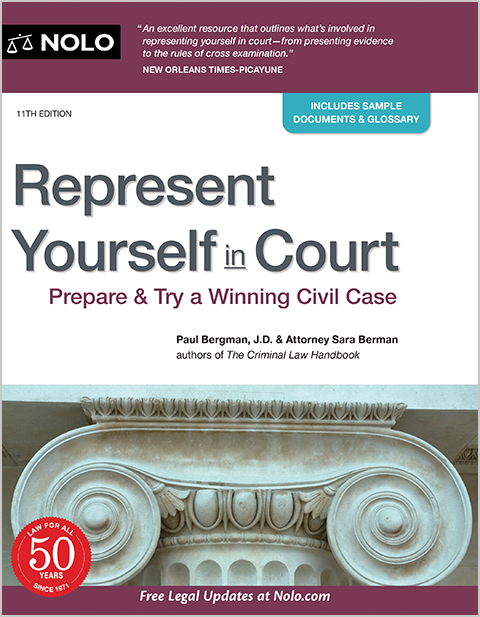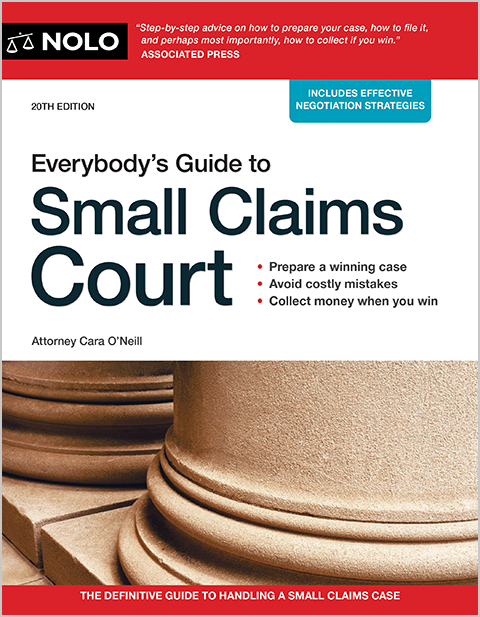From maximum dollar limits to statutes of limitations, learn the basics about small claims in Minnesota Conciliation Court.
Filing a claim in the Minnesota Small Claims in Conciliation Court can be a straightforward and inexpensive way to settle a dispute. But you must follow the rules to prevail.
Below are answers to some common questions about the process of filing a small claims action in Minnesota's Conciliation Court. You'll learn about preparing and presenting your case, appealing a small claims decision, and collecting a money judgment. You'll also find links to more helpful small claims articles and resources.
How Does Minnesota Small Claims Court Work?
A small claims case starts when the plaintiff (the person suing) files a claim in Conciliation Court, the court that handles small claims cases in Minnesota. The plaintiff must then serve a copy of the claim and court date on the "defendant," the person or company they're suing.
To prevail at the trial, you must present evidence supporting your case. The defendant also has the opportunity to present a defense in response. If the defendant filed a counterclaim, the defendant must also submit evidence proving you owe the defendant money.
After hearing each side's argument and evaluating the evidence, the judge will issue a money judgment to whoever proves they're entitled to an award. Receiving a money judgment is very powerful because it allows a creditor to collect using property liens, wage garnishments, bank account levies, and property seizures.
What Is the Small Claims Court Limit in the Minnesota Small Claims in Conciliation Court?
You can ask for up to $20,000 for most small claims action in the Minnesota Small Claims in Conciliation Court but only up to $4,000 for claims involving consumer credit transactions. Plaintiffs with claims exceeding the limit can use small claims court if they are willing to accept the maximum. Otherwise, they must file in a higher court. (Minn. Stat. § 491A.01 (2025).)
Can a Landlord Bring an Eviction Lawsuit in a Minnesota Small Claims Court?
The small claims division of the Minnesota Conciliation Court does not hear evictions. (Minn. Stat. § 491A.01 (2025).) However, other disputes between landlords and tenants—such as actions regarding security deposits—are allowed in small claims court. It's also an excellent forum for other cases typically brought in small claims courts, such as property damage cases and breach of contract disputes.
Which Minnesota Conciliation Court Should I File My Small Claims Action in?
Minnesota has many Conciliation Courts, but you can't always pick the most convenient location. You must choose the proper court location, or venue. Otherwise, the defendant can ask the court to transfer or dismiss your action. In Minnesota, you can file in the county where:
- the defendant (the person against whom you are making a claim) lives
- the business or branch office is located, if the defendant is a company, or
- the rental property is located in a landlord-tenant dispute (other than an eviction).
(Minn. Stat. § 491A.01 (2025).)
You might have other options, depending on your case. Most courts post venue rules on the court website.
How Much Time Do I Have to File a Case in Small Claims Court in Minnesota?
You don't have an unlimited amount of time to file a lawsuit. You'll have to bring it within the statute of limitations period for the case type. But pinning down how much time you have to file isn't always as simple as reading the statute of limitations.
The time can stop and restart depending on various circumstances, and figuring out when it expires can be challenging. The process is known as "tolling" the statute of limitations, and it happens when a plaintiff or defendant is unavailable for a lawsuit. For instance, the personal injury statute won't begin running on a minor's injury until the child reaches 18 years of age and can sue without the help of a guardian. Learn more about calculating the statute of limitations and whether it's too late to sue.
Can an Attorney Represent a Small Claims Claimant in Minnesota Conciliation Court?
In Minnesota, lawyers can appear on behalf of parties in small claims court only if the judge allows them to do so. However, small claims court is more relaxed and easier to navigate than higher courts, and most people are comfortable pursuing claims "in pro per" or without counsel.
Does the Defendant Need to Answer the Small Claims Complaint?
No. In Minnesota, the defendant doesn't have to file an answer before the hearing. The defendant can appear at the hearing and put forth a defense then. However, you should check with your court to determine if you must do anything to avoid an automatic loss and default judgment.
Learn more about what happens if you get sued in small claims court.
Will I Have a Judge or Jury Trial in Small Claims Court in Minnesota?
Jury trials aren't allowed in Minnesota small claims court, so a judge will hear your claim. (Minn. Stat. § 491A.02 (2025).)
Find out what to expect at the small claims trial.
How to Prepare and Present a Minnesota Small Claim in a Conciliation Court Case
You'll want to explain what happened and present evidence supporting your version of the events and the amount of money lost.
What Do I Need to Prove in My Small Claims Case?
It will depend on the type of case. In most instances, you'll need to prove that the person you're suing harmed you and the amount of money it will take to right the situation. Research the "elements" of your case type to determine exactly what you must prove.
One of the most important things people forget to do is prove how much they're out of pocket. For instance, you'll likely provide medical bills if you were injured or repair estimates if you suffered property damage. Make sure you can prove how much it will take to fix the problem.
What Type of Evidence Should I Present in Small Claims Court?
If you're suing someone who didn't comply with a written contract, you'll need copies of the contract and any correspondence exchanged about it. You might also want to present photos of shoddy work or damaged property.
If someone witnessed an event, bring them in. You might also need expert testimony to establish the defendant caused the problem if it isn't something that can be inferred. For instance, only a medical professional can testify about the cause of an illness or injury, and you'd need a mechanic to verify most automotive repairs. Check with the court to see if you can provide a statement made under oath if the person is unavailable or charges too much for in-person testimony.
Learn about gathering evidence in support of your small claims case.
How Should I Organize My Small Claims Presentation?
After providing the judge with a short case description, you'll likely present the facts chronologically. If you're afraid you'll forget something or are worried you'll ramble on, write out your presentation and read it when it's your turn. However, you'll likely make a better impression if you speak naturally, using a bullet point list for reference when needed. Either way, practicing beforehand is the key to a polished presentation.
Also, it's best to cover each point concisely yet fully, with as little emotion as possible. You'll also want to avoid jumping in if the other side says something incorrect. Instead, make a note and address it when it is your turn to speak.
After the Small Claims Trial: Collecting the Judgment and the Appeals Process
The court might announce the winner immediately after the trial, but it's more likely that you'll find out who prevailed by mail. Your next steps will depend on whether you win or lose.
Can I Appeal a Minnesota Small Claims Decision?
Yes, but you don't have long. Either side can appeal the Conciliation Court judgment by filing the appropriate paperwork with the court administrator within 21 days of the mailing of the judgment. Remember that you'll have less than 21 days since time is calculated from the mailing date, not the date you receive the judgment. (Minnesota General Practice Rules, Rule 521 (2025).)
You must comply with the filing deadline and other rules, so do your research and count the dates accurately, or talk with a local attorney.
Will the Court Collect My Judgment for Me?
No. You'll be responsible for all collection efforts. Before pursuing a small claims court case, you'll want to evaluate whether the defendant has assets you can seize after winning the case. A debtor with nothing you can take is called "judgment proof," and pursuing an action won't make sense unless the debtor acquires property and income in the future.
Learn more about determining whether you can collect before suing in small claims court.
Can State Exemption Laws Stop Me From Seizing the Defendant's Property?
Yes. Every state allows debtors to protect essential property from creditors, such as household goods, a percentage of income, and some equity in a car and home, although the specific property protected varies greatly. You'll find these protections in your state's exemption statutes. In most states, the same exemptions protect assets from creditors in and outside bankruptcy.
Learn more about why you shouldn't sue unless you can collect the judgment.
How to Find More Information About Minnesota Small Claims Court
Most courts include filing instructions on the court website or provide self-help services. Try the Minnesota Judicial Branch's Conciliation Court self-help page or the Minnesota Attorney General's Guide to Small Claims Court for more resources. You can also view Minnesota statutes (Minn. Stat. Ann. §§ 491A.01 to 491A.03) and court rules (General Practice Rules, Rules 501 to 525) on the Minnesota Legislature's website.
For detailed help with case filing, court strategy, and collecting a money judgment, see Everybody's Guide to Small Claims Court by Attorney Cara O'Neill (Nolo).
And don't forget that our small claims homepage is an excellent place to start if you have other questions. You can also consult an experienced local lawyer if you need more help.



